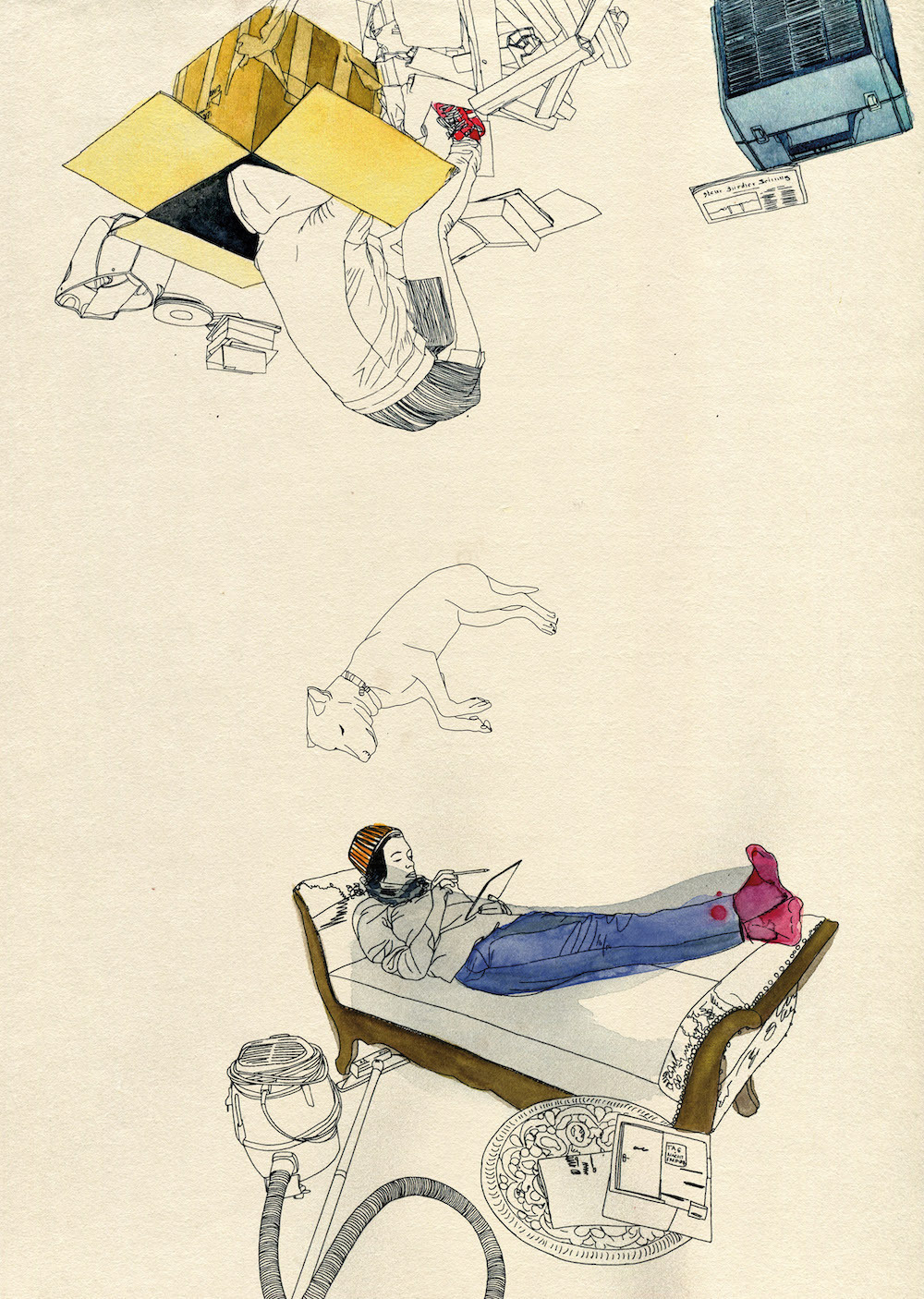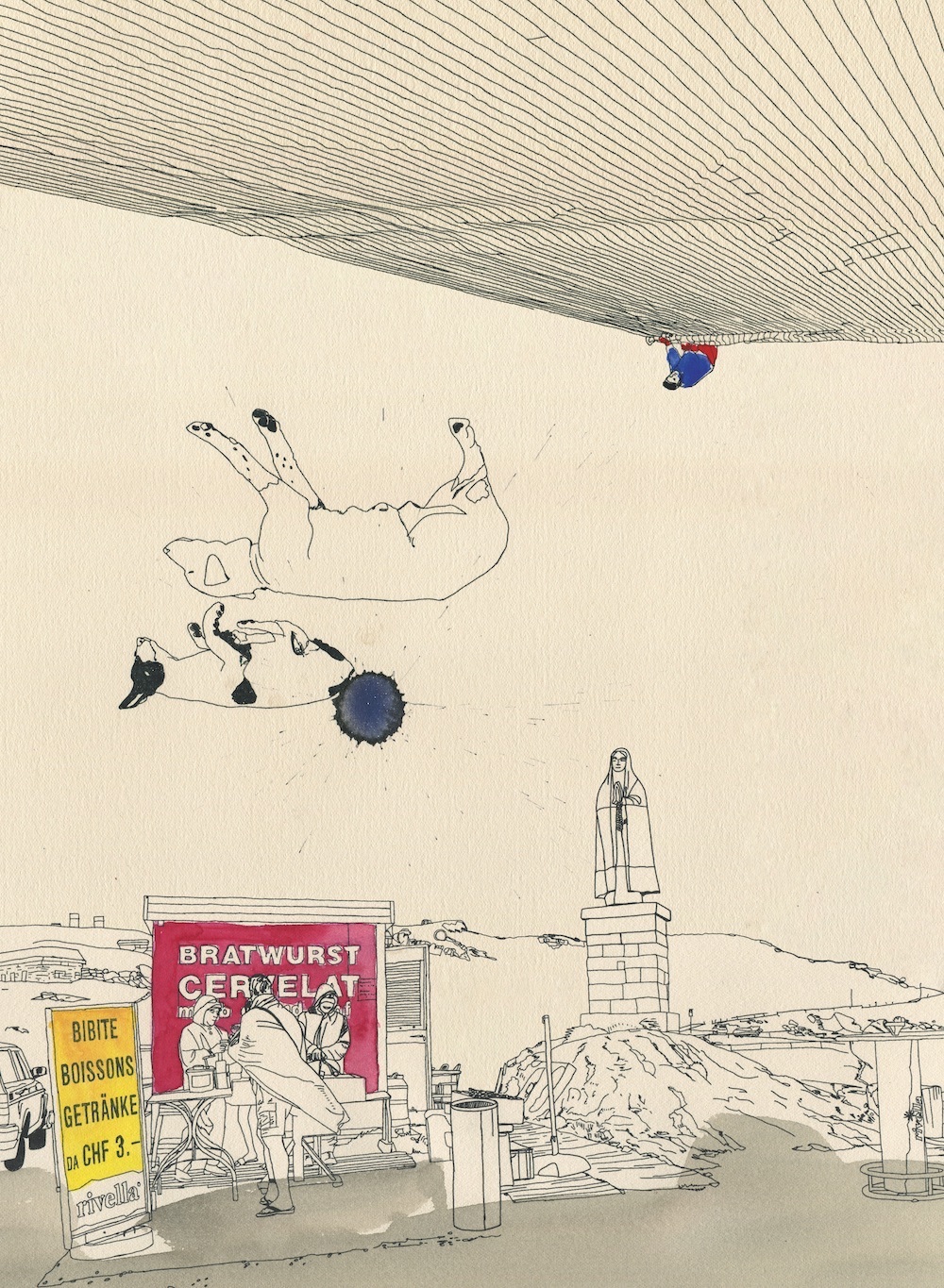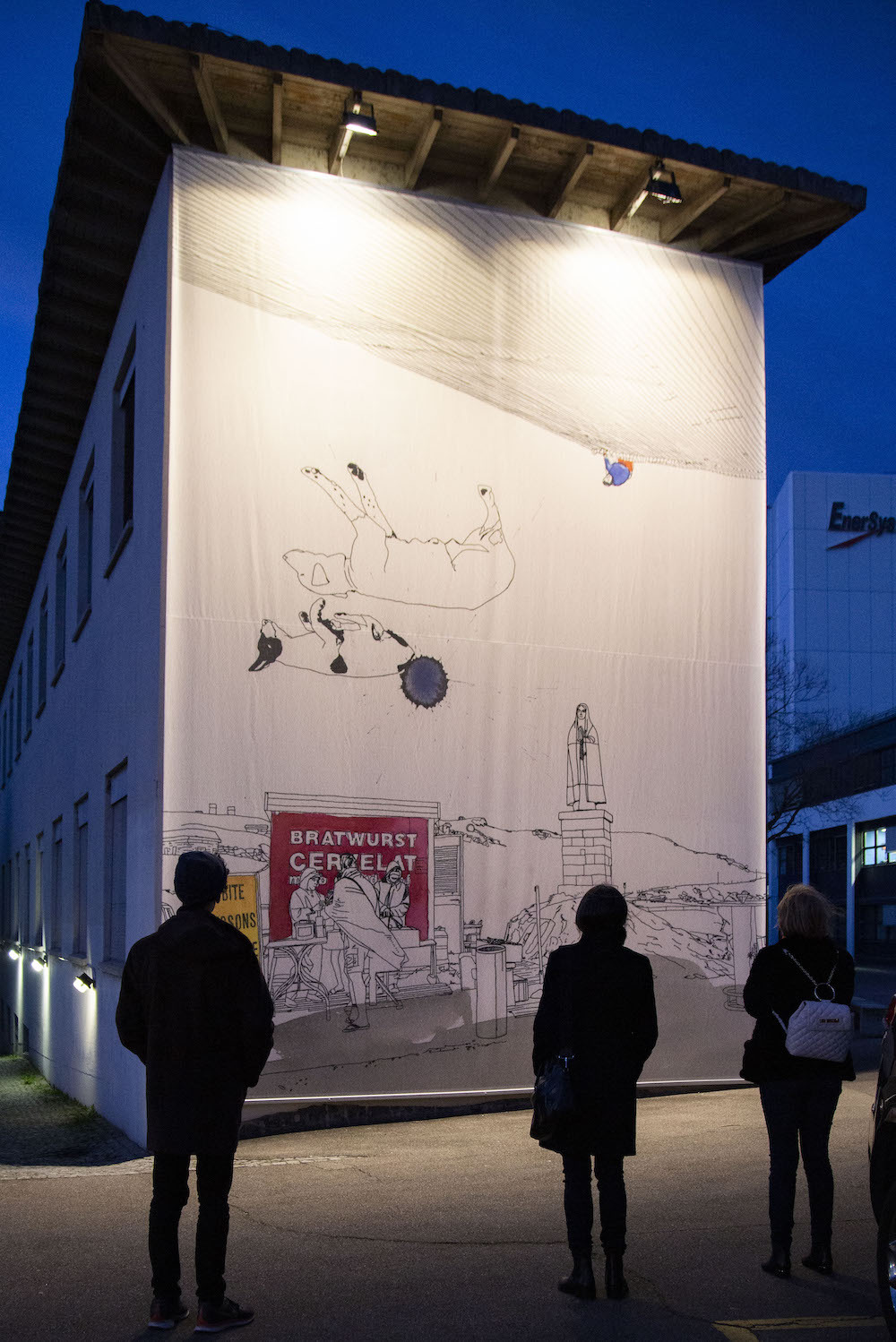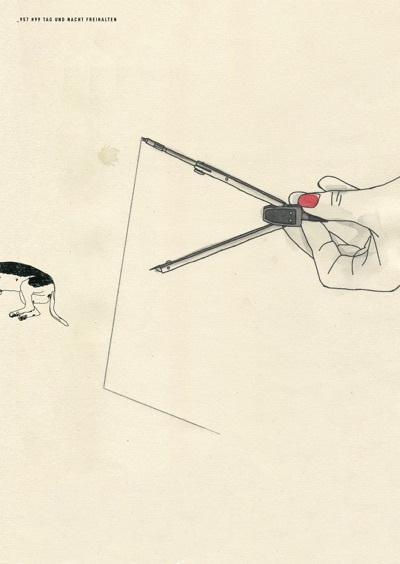Lena Eriksson
Tag und Nacht freihalten
Annual exterior project 2020
13.3.2020 —
14.3.2021
Lena Eriksson (born in Visp in 1971) finds her subjects in everyday life, which she deftly observes in her own unique way. She cultivates the art of friendly exchange and hospitality, focusing on unique perceptions when traveling or walking, and explores the possibilities of creative art education. Her main mediums are drawing, video, and performance.
She led the art space Lodypop in Basel from 2004 to 2009 and has been working as a postgraduate art lecturer at the Lucerne University of Applied Sciences and Arts since 2014. Ericsson lives mostly in Basel and works in a communal studio in Dreispitz.
There is no word that encapsulates every aspect of her artistic work, yet what Lena Eriksson describes as an art of friendly exchange comes very close to embodying her signature style. Lena Eriksson is an enabler, an adventurer, an inviting host, a conversation partner. Born in Valais, she travels around the world with an attentive gaze, mostly to unfrequented places off the beaten track — places that require more time and call for a slower pace, but which also attach great importance to hospitality. The countless sketches on paper or a tablet that Eriksson creates of these numerous journeys far and wide testify to how attentively and accurately the artist listens. She listens intently to stories that narrate the personal and the collective at the same time, enabling us to become aware of what could affect us all. Her drawings are usually the result of encounters, whether with her fellow human beings or with situations, thoughts, and images. For many years, the Neue Zürcher Zeitung regularly published one of Eriksson’s drawings each week. These drawings were not designed to be illustrations accompanying a text, but as an additional thought or idea that operated in tandem with what was being read.
Works emerge out of these communal moments, this artistic attitude of exchange: these may take the form of drawings, texts, magazines, performances, or art spaces, as well as communal meals, conversations, art education projects of various kinds, or film screenings.
When invited to design this year’s outdoor banner at Kunsthaus Baselland, Lena Eriksson did not simply fall back on drawings that she had already made at various other locations. With her large-format drawing, the artist instead creates a drawn yet real place at the Kunsthaus itself. A place that not only invites you to stop and look, but also to linger, to tell stories and to listen, to think deeply in a new light. Text by Ines Goldbach
Tag und Nacht freihalten (Keep Clear Day and Night)
If you read the German word for life backwards, Leben, it becomes Nebel — fog. To draw is to look both forward and backward. Drawings are the result of movement and the expression of a confrontation with the world and with oneself. My drawings speak of an artistic life. They depict what I do and experience, whether I leave the house or not. A day in bed thus becomes a creative act; doing nothing becomes a moment of inspiration.
It is cold and windy on the Gotthard pass. Inhospitable. On the pass, the legend of Gotthard has vanished into thin air. Drawing enables new narratives to be created.
At the Chorsu Bazaarin Tashkent, a man unrolled an enormous blue and white striped tarpaulin. No matter how cramped a place feels, there is always space. Anyone can unroll themselves. The rules of art are like a sanctuary. We must take care of them, we cannot lose them. I am looking for meaning, significance, illumination, autonomy, friendship and friendliness. I would like less distance and submission, but more inaccessibility.
In Dhaka, on the way to work,I see two dogs sleeping on a heap of sand in broad daylight. I’m actually afraid of dogs. Sleeping dogs have no direction. Once I’ve drawn them, however, I can turn the page and see everything in a new and different way once again. Collage and bricolage. Text by Lena Eriksson



